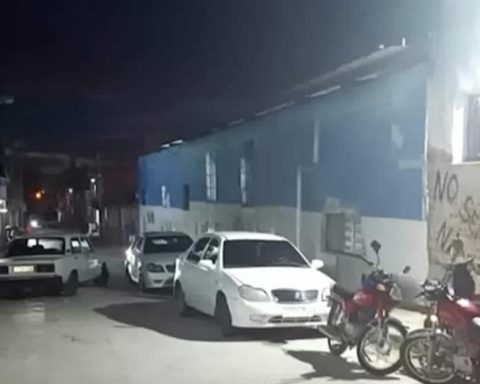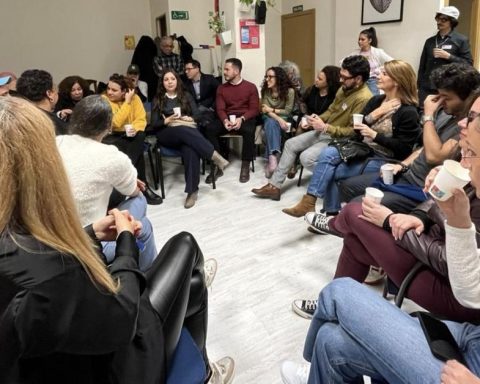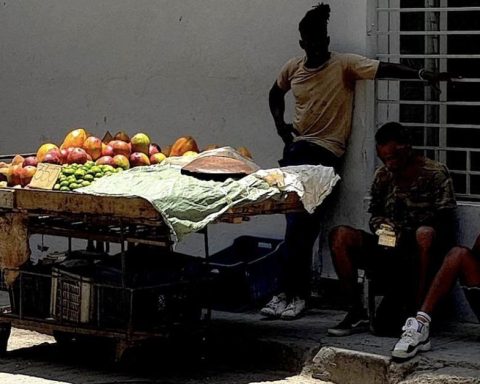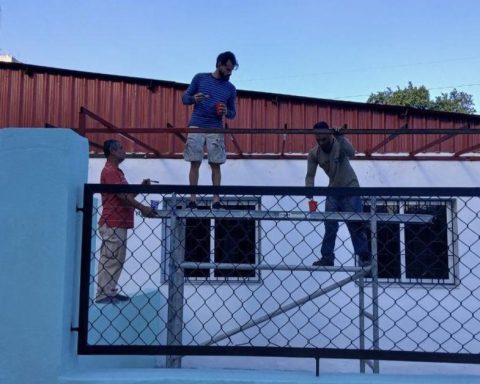The rattle of the Community Services truck makes people get on the sidewalk and make way for the colossus. Two men get out and push a garbage container cracked on the sides. Between flies and screams, customers waiting to buy in the Plaza de Carlos III see the warehouse rise, embraced by an improvised band of cloth and drop the waste inside the truck. “Tremendous invention!” ironically one. “That is the creative resistance that Díaz-Canel is talking about,” another mocks.
The trick is more desperate than artifice. “Many containers have lost their coupling and we had to get up to do something because otherwise it would be more work for us,” laments one of the workers from the state company who carries one of these bands for when he needs it. “Without this, part of the garbage falls on top of us when we lift the container or we would have to use shovels to throw it into the truck. Nobody wants to work in these conditions but it is what it is.”
For decades, Cuban authorities have boasted of the achievements of the National Association of Innovators and Rationalizers (Anir), an entity that seeks to inventively solve the problems of supplying spare parts. But behind the praise, when an employee replaces an imported gear with one made on a domestic lathe or repairs complex foreign machinery with wire and old tubes, there is more desperation than ingenuity.
“First we had to invent a soyuz (coupler) to be able to use the garbage trucks donated by Japan with these containers because they were not compatible”
“First we had to invent a soyuz (couple) to be able to use the garbage trucks that Japan donated with these containers because they were not compatible,” he explained to 14ymedio Walfrido, former driver of a garbage collection truck. Last Aprilthe state worker was blunt when he defined the blue: “They are not bad, they are very bad.” After the months, the original soyuz It was no longer good for anything because, in most cases, the hooking mechanism for the shells broke.
When a few years ago the blues they began to appear on street corners in Havana, they had that air of novelty that made many believe that the garbage problem in the Cuban capital was going to be solved. But the poor quality of these waste deposits soon began to be noticed and was fatally combined with the looting that their less colorful cousins have always been subject to but have also ended up torn to pieces or disappeared in the streets of the Island.
“They pay badly, the salary is not enough for almost nothing and the working conditions are very difficult, but if the daily norm is not met then they are charged much less,” Walfrido details. “Now it is being invented with a band, tomorrow we will have to use something else and the day will come when the garbage will be collected in all of Havana with a bulldozer if things continue like this,” he laments. While the “creativity” is provided by the Communal employees, the resistance falls to the residents of the city who will have to live with more mountains of waste.
________________________
Collaborate with our work:
The team of 14ymedio He is committed to doing serious journalism that reflects the reality of deep Cuba. Thank you for accompanying us on this long road. We invite you to continue supporting us, but this time becoming a member of our newspaper. Together we can continue transforming journalism in Cuba.
















